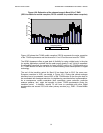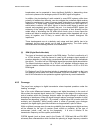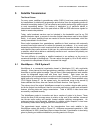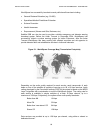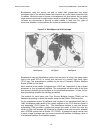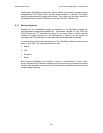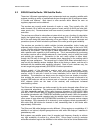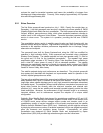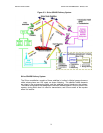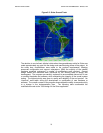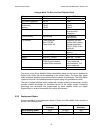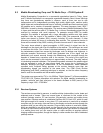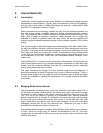DIGITAL RADIO GUIDE SATELLITE TRANSMISSION - SIRIUS / XM
69
5.2 SIRIUS Satellite Radio / XM Satellite Radio
These two US-based organisations have implemented and are operating satellite radio
systems providing a variety of mobile/fixed services throughout the 48 contiguous states,
in Canada and offshore. Both intend to offer services within Mexico as soon as
regulatory approvals can be obtained.
The services are currently audio channels of music or voice. They typically offer 100
audio channels, 60 of which are various genres of music and 40 of which are voice (talk,
news, sports, etc.). Demonstrations have been made of possible future offerings of data
and video.
The services are offered to subscribers at rates which vary as a function of subscription
length; the highest being a monthly rate of approximately $13 US, and $499 US for the
life of the radio being the lowest assuming a five year lifetime. However, discounts and
promotions (some of which include the purchase of the radio) provide great variability.
The services are provided to mobile vehicles (private automobiles, trucks, boats and
airplanes) and to homes and businesses. The number of subscribers at the end of 2006
is over 14 million with the preponderance being in motor vehicles. There are two types of
receivers for this market. The first type is called aftermarket where subscribers wish to
add a satellite radio capability to their existing car. This is accomplished by purchasing
an auxiliary receiver with a satellite antenna at a local retailer, many of which also install
and activate the equipment. Connection to the car’s audio system is either direct,
through the FM radio or through the cassette player depending on the existing radio’s
design and user preference. The second type is called OEM where subscribers buy a
new car with the satellite receiver installed, either at the factory or dealer, and the car is
delivered with the satellite radio capability activated. Costs of such receivers vary, the
current range being approximately $150-$300 US without promotions.
Various models of the aftermarket receiver exist such as plug-and-play, home,
transportable (e.g., boombox), boat, etc. One of the more popular is the plug-and-play
receiver, which is sold with a dock for home installation and a dock for automobile
installation. The subscriber can simply move the receiver from one location to another,
thus avoiding the need to purchase a second one. The future trend is believed to be
towards OEM radios as well as to reduce costs of receivers, primarily due to improved
ASIC chipsets (which are the heart of the receiver) and consequent increased
manufacturing volume.
The Sirius and XM services are similar except for the music channels where Sirius has
no commercial advertising. The systems are different however. Both systems use the
12.5 MHz bandwidth assigned (Sirius radio frequency allocation is 2320.0-2332.5 MHz
and XM is 2332.5-2345.0 MHz) by employing approximately the top and bottom 4 MHz
for satellite transmission with TDM/QPSK modulation and the center 4 MHz for terrestrial
repeaters. These terrestrial repeaters take the satellite signal and rebroadcast it in the
urban cores of large cities with COFDM/QPSK modulation to overcome service outages
from blockage. Sirius transmits all its channels in one contiguous block approximately 4
MHz wide while XM divides its channels in half, transmitting them in two blocks each
approximately 2 MHz wide.
The Sirius and XM orbital designs are also different. Sirius employs a constellation of 3
satellites in an inclined, elliptical geosynchronous orbit while XM employs 2 satellites in
geostationary orbit.
Both systems use satellite space, time (4 seconds) and frequency diversity to achieve
very high availability of service (e.g., above 99%). Sirius chose its orbit to maximize
subscriber elevation angle to the satellites in the northern third of the United States which



